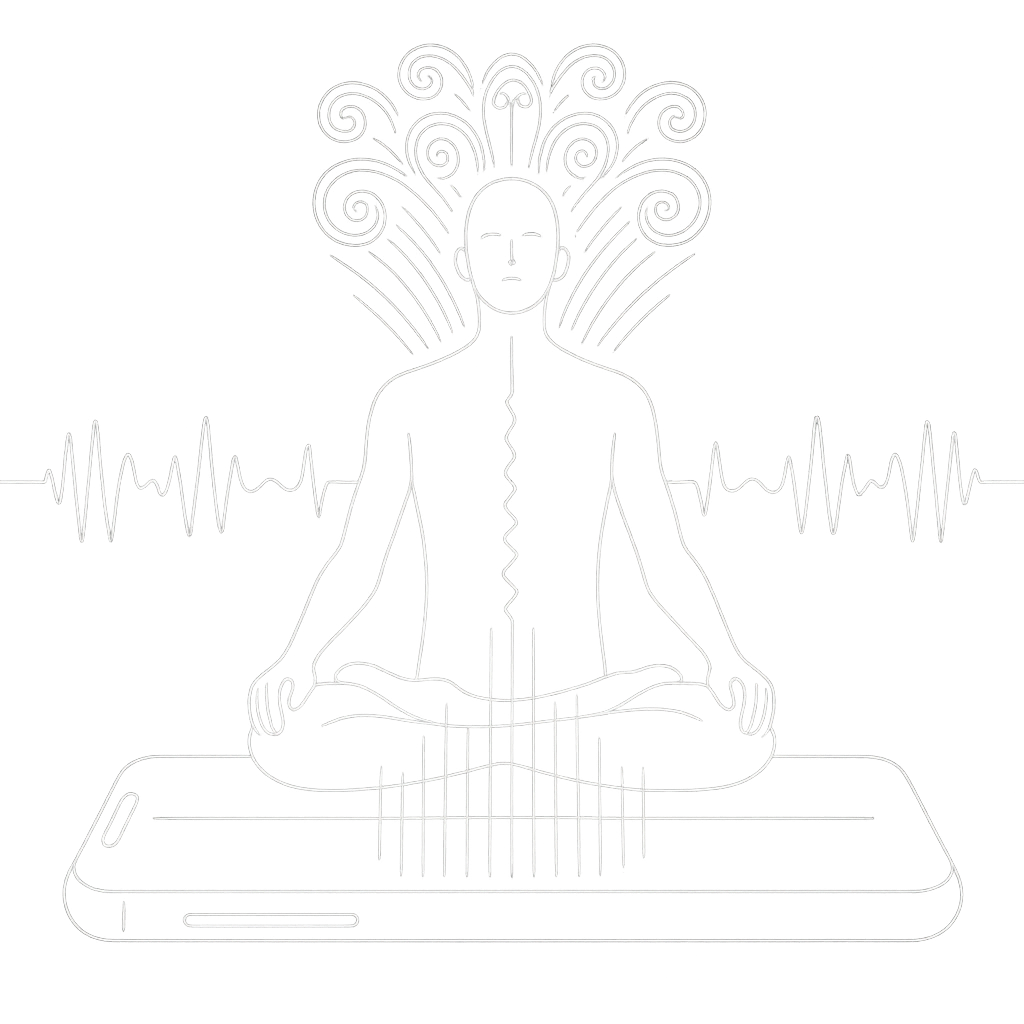Binaural Beats (Brainwave Entrainment)
Experience sound‑driven brainwave guidance designed to support sleep, calm focus, deep relaxation, and cognitive performance. Requires stereo headphones. The perceived beat equals the difference between the tones heard by each ear.
What Are Binaural Beats?
Binaural beats occur when each ear hears a slightly different tone (e.g., Left 400 Hz, Right 407 Hz). Your brain perceives a 7 Hz beat—often associated with Theta rhythms—without that beat existing as a physical sound in the air.
How It Works
- Two steady tones: one to each ear via stereo headphones
- Perceived beat = Right ear frequency − Left ear frequency
- Choose a beat range linked with a desired state (sleep, calm, focus)
Note: Individual responses vary and scientific consensus is evolving. Use mindfully and track what works for you.
In HzPro
Pick a brainwave range, start at low volume (≤30%), and set a comfortable session timer. Optionally combine with breathwork or soft ambient audio.
Brainwave Ranges & Common Uses
Select a beat difference within the target range. Start shorter and low volume to assess comfort.
Delta • 0.5–4 Hz
Often associated with deep sleep and physical restoration.
Theta • 4–8 Hz
Meditative drift, creativity, and emotional processing.
Alpha • 8–12 Hz
Calm focus, relaxed attention, learning readiness.
Beta • 12–30 Hz
Alert focus and task engagement. Use moderately; can feel stimulating.
Gamma • 30+ Hz
High arousal and integration. Some users prefer upper‑beta instead.
How to Use Binaural Beats in HzPro
A simple, safe workflow to get started.
1) Headphones On
Use quality stereo headphones so each ear receives its own tone clearly.
2) Pick a Range
Choose Delta for sleep, Theta for meditation, Alpha for calm focus, or Beta for productivity.
3) Start Low
Begin at ≤30% volume and 10–15 minutes. Increase gradually if comfortable.
4) Add Intent
Pair with breathing (e.g., 4‑6 cadence) or journaling to anchor attention.
Tips & Troubleshooting
Small adjustments can make a big difference.
Carrier Tone
A mid‑range carrier (e.g., ~200–400 Hz) is often comfortable. If tones feel sharp, lower the carrier or volume.
Balance & Fit
Ensure left/right channels are balanced and headphones fit well to avoid leakage.
Environment
Choose a quiet, safe space. Do not use while driving, cycling, or operating machinery.
Expect Variability
Responses vary by person and context. Track what works for you across days and activities.
Safety & Important Notices
Use mindfully and discontinue if discomfort occurs.
- Start at low volume (≤30%) and short sessions (10–20 minutes)
- Headphones required. Do not use while driving or in unsafe situations
- If you have a seizure history, tinnitus, or a diagnosed condition, consult a clinician before use
- HzPro is a wellness aid and not a medical device. Read our Medical Disclaimer
Binaural Beats FAQ
Do I need headphones?
Yes. Binaural beats rely on separate tones delivered to each ear via stereo headphones.
Which range is best for sleep?
Delta (0.5–4 Hz) is commonly used for deep sleep support; some prefer late‑evening Theta (4–8 Hz).
Can I use them daily?
Many people do. Start short and observe how you feel. Take breaks when needed.
Can I combine with Solfeggio or ambient sounds?
Yes. Keep overall volume low and ensure the binaural beat remains clear in headphones.
Try Binaural Beats in HzPro
Install the iOS app, choose a brainwave range, and begin a calm, focused session in seconds.
Download on the App Store